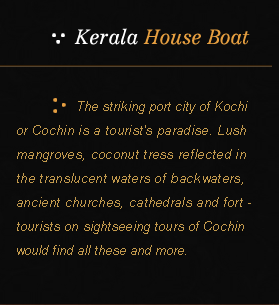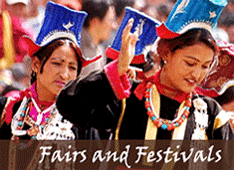Home > North East India Tour > Darjeeling & Sikkim Tour

Duration : 12 Days & 11 Nights
Location : Kolkata – Kalimpong – Gangtok – Changu – Lachung – Yumthang – Gangtok – Pelling – Darjeeling – Kolkata.
Location : Kolkata – Kalimpong – Gangtok – Changu – Lachung – Yumthang – Gangtok – Pelling – Darjeeling – Kolkata.
Day 01
Kolkata Arrival:
COMPANY REPRESENTATIVE will receive you on arrival at the KOLKATA AIRPORT and transfer to your hotel.
Kolkata was the first capital of the British in India. The city was established in 1686 when the British moved to the small villages of Sutanati, Govindpur, and Kalikata from their trading port of Hooghly. It progressed well until 1756 when Siraj-Ud-Daula (Nawab of Bengal) attacked the town and drove away the British. Lord Clive retook Kolkata and until 1911, it remained the capital of the British government in India. Being the centre of power for so long created a unique culture and heritage, totally unlike any other city in India.
Overnight will be at Kolkata.
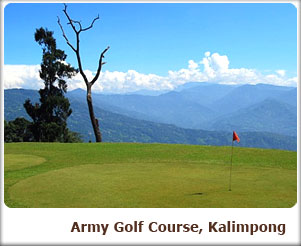 Day 02
Day 02
Delhi – Bagdogra:
By Air
Bagdogra – Kalimpong:
By Road 100kms/04hrs
Breakfast will be at the hotel.
Transfer to the airport to take flight for Bagdogra. Reach Bagdogra and drive to Kalimpong. Reach and check into the hotel.
Kalimpong is a bustling and rapidly expanding, though still relatively small, bazaar town set among the rolling foothills and deep valleys of the Himalayan at an altitude of 1250m. It was once part of the lands belonging to the rajas of Sikkim, until the beginning of the 18th century when it was taken from them by the Bhutanese. In the 19th century it passed into the hands of the British and thus became part of West Bengal. It became a centre for Scottish missionary activity in the late 19th century, and Dr Graham's orphanage and school is still running today.
Kalimpong is well known for its many educational institutions Kalimpong has become an important tourist destination owing to its temperate climate and proximity to popular tourist locations in the region. Kalimpong is famous for its flower market, especially the wide array of orchids. Flower nurseries involved in exporting Himalayan grown flower bulbs, tubers and rhizomes contribute to the economy of Kalimpong. It also houses several Buddhist monasteries which hold a number of rare Tibetan Buddhist scriptures.
Relax and then proceed for the sightseeing.
Kalimpong attractions include three monasteries, a couple of solidly built churches, an excellent private library for the study of Tibetan and Himalayan language and culture, a sericulture, orchid nurseries and fine views over the surrounding countryside. Although not many travelers bother to visit Kalimpong, there's enough here to keep you occupied for a couple of days, and for the energetic there's some good trekking.
Overnight will be at Kalimpong.
Day 03
Kalimpong – Gangtok:
By Road 85kms/02-03hrs
Breakfast will be at the hotel.
Proceed to Gangtok. Reach and check into the hotel.
Gangtok, the "Lofty Hill" or the "Hill made flat to build the Gangtok monastery in 1716"; is a city, which, till one sees it, one would believe exists only in picture-story books. In the mystery-laden mists prayer flags whip in the breeze; wheels spin in the hands of Lamas mumbling invocations to God, in the distance are the snows, on the streets amidst brightly painted pagoda roofed houses, lined with friendly smiling people are silver, silk and spice and jewellery to gladden an maiden's heart, from across the seven seas are gadget and goods to delight the collector of "imported goods’, while directly overlooking the city is the hill Lukshyma, the 'Mother of Pearl' citadel of the magic mountain, Khang-Chen-Dzod-Nga.
Overnight will be at Gangtok.
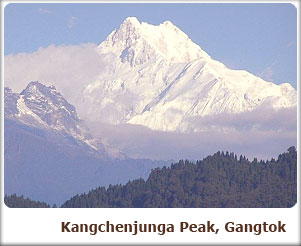 Day 04
Day 04
Gangtok:
After breakfast proceed for the sightseeing.
Deer Park: Adjacent to the new secretariat and also called the Rustomji Park named after one of the Dewans of the Chogyal of Sikkim, the park has a big open enclosure in which animals native to Sikkim like the red panda and the Himalayan Bear are kept. A big statue of Lord Buddha commemorating his preachings of the noble truths in the Deer Park at Sarnath adorns the park premises. A butter lamp perpetually burns in front of the statue, which is surrounded with flowers of exotic variety. The park commands a fantastic view of the hills, surrounding Gangtok.
Dul-Dul Chorten: Duddul Chortenat Dotapu Chorten, Gangtok was built under the supervision of the late Most Venerable Trulshi Rinpoche after due preparations in 1945-46,in accordance with the prophecy made in 1944 by the Holiness the Dud-Zom Rinpoche.
White Hall: It was built in 1932 in memory of the first political officer of Sikkim, Claude White. There is an Officers Club and Badminton Court in the white hall.
Lal Bazaar: On Sunday, Gangtok Lal Bazaar is a melody of color. Various ethnic groups from different villages gather to haggle, bargain, and gossip or just sell their wares. The marketplace rings to a cacophony of sound-the babble of ethnic tongues, the chiming bells of the Indian sweet shops the whining of a beggar, the chanting of prayers, the advertising of the Sikkim lottery and the blaring Hindi love songs from the Denzong cinema.
Overnight will be at Gangtok.
Day 05
Gangtok – Excursion to Changu Lake:
Enjoy breakfast in the hotel.
Proceed for excursion to Changu Lake - about 3720 mts above sea level with beautiful scenic view.
Drive back to the hotel in the afternoon. Rest of the day is free to explore local Gangtok markets on your own.
Overnight stay will be at Gangtok.
Day 06
Gangtok – North Sikkim (Lachung):
By Road 116Kms/05hrs
Enjoy breakfast in the hotel.
In the morning drive to North Sikkim (Lachung). Lachung is a very small & pretty village of North Sikkim. On the way you can enjoy a beautiful drive between hills.
Reach and check in to the hotel.
Rest of the day is free for leisure or to explore the remote villages by short trekking and enjoy the Eastern Himalayan beauty from Lachung. Return back to hotel.
Overnight stay will be at Lachung.
Day 07
North Sikkim (Lachung) – Yumthang Valley – Gangtok:
By Road 25Kms/30minutes
Enjoy breakfast in the hotel.
Proceed for excursion to Yumthang Valley (11500 ft), covering 25 kms. It is an extremely picturesque place and looming snowcapped peaks & pine forests surrounding the valley.
Drive back to Gangtok. Reach and check in to the hotel.
Overnight stay will be in Gangtok.
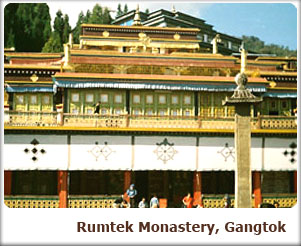 Day 08
Day 08
Gangtok – Rumtek – Pelling (Pemayangtse):
By Road 100 kms in 5 hrs
After breakfast proceed to Pelling enrouting Rumtek Monastery.
Rumtek Monastery is one of the most important seats of the Kagyu lineage outside Tibet. In the early 1960's, His Holiness the Sixteenth Gyalwang Karmapa founded this seat near the 300 year old Kagyu monastery built in the sixteenth century by the Fourth King of Sikkim under the guidance of the ninth Karmapa. Dharma Chakra Center includes a beautifully structured main shrine temple and monastery with monks' quarters, where the Karmapa resides and where the most of the important relics are enshrined; a three-year retreat center; a Shedra, or monastic college, where the relics of the Sixteenth Karmapa are enshrined; a nunnery; stupas; a protector's shrine; institutions for the lay community; and other establishments.
Continue drive to Pelling. Reach and check in to the hotel.
Pelling in Sikkim is placid travel destination, situated at an altitude of 6,800 ft from the sea level. Pelling Sikkim attracts most of the visitors for its glorious history, nature and culture of the state. Sikkim Pelling, the laid back, scenic, but rapidly swelling hamlet is famous for the magnificent view of the snow-capped mountains of Kanchanzonga.
Pelling in Sikkim is an ideal getaway for tourists as its vicinity has numerous waterfalls, soft trek routes, villages and soothing atmosphere for all discerning. High above the forest covered hills, in an amphitheater of cloud, snow and rock.
Overnight stay will be at Pelling.
Day 09
Pelling – Darjeeling:
By Road 120kms /05 hrs
After breakfast proceed for half day sightseeing of Pemayangtse Monastery, Rabdanse Palace Ruins, Kanchan Dezonga Falls, Rimbi Falls, and Keochalpari Lake.
Late in the afternoon proceed to Darjeeling. Reach and check into the hotel.
Years ago the mountain spurs, on the slopes of which the hill station of Darjeeling now stands, formed a part of the independent kingdom of Sikkim and was covered with dense forest. The town of Darjeeling alone now has thousands of people belonging to different creeds and races, but there were not more than two hundred inhabitants when the East India Company, which then controlled British interests in India, first came into contact with it.
When India became independent, Darjeeling remained a part of West Bengal. From 1986, a powerful agitation began in the Darjeeling hills seeking an independent state in the Indian Union. The agitation ended with the establishment of the Darjeeling Gorkha Hill Council under the Chairmanship of Mr. Subash Ghissing and has been given considerable autonomy in administrative matters.
Darjeeling, which is internationally acclaimed as one of the best hill stations in the world, is covered with pine trees, rhododendrons, magnolias, primulas and orchids. With houses hugging the hill side are various places to visit, which are of great interest.
Overnight will be at Darjeeling.
Day 10
Darjeeling:
Early morning excursion to tiger hill, Ghoom monastery & Batasia loop.
Proceed to Tiger hill very early morning to watch the spectacular sunrise and it’s amazing effects on Mount Kanchendzonga. (World's 3rd highest peak)
Come back to the hotel. After breakfast proceed for the sightseeing covering Padmajan. Zoological Garden, Himalayan Mountaineering Institute, Tibetan Refugee Self-help Center and visit to the all and Local Market (City Life).
Visit villages and enjoy the weather. Also enjoy the toy train ride - this is one of the most scenic narrow gauge railways journeys in the world.
Overnight will be at Darjeeling.
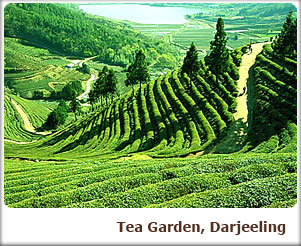 Day 11
Day 11
Darjeeling – Bagdogra:
By Road 90Kms/02hrs
Bagdogra – Kolkata:
By Air
Breakfast will be at the hotel.
Proceed to Bagdogra airport to take flight for Kolkata. Reach Kolkata and check into the hotel.
Relax and then proceed for the sightseeing.
Birla Planetarium: Only the second of its kind in the commonwealth and similar to that in London. Regular astronomical shows are presented here with commentaries in different languages. Shows are held on all days excluding Mondays.
Kalighat: According to the legend, when Lord Shiva’s wife Parvati’s body was cut up, one of her fingers fell here. Rebuilt in 1809, this is an important shrine of Hindu Shakti worship. The temple is in the southern part of the city.
Dakshineswar Kali Temple Belur Math: Built in 1847, on the banks of the Hooghly, north of Calcutta, the temple is associated with Shri Ramakrishna, the eclectic 19th century saint who revived Hinduism during the British Raj. Across the river stands Belur Math, headquarters of Ramakrishna Mission. The Monastery is a haven of peace and religious harmony.
Ramakrishna Mission Institute of Culture: Commemorates the birth centenary of Shri Ramakrishna Paramahansa. Religious discourses and cultural exchanges are held here among international scholars. The institute is located at Golpark.
Nakhoda Mosque: Modelled on Akbar’s tomb in Sikandra, the red sandstone mosque has two minarets 46 mts high, a brightly painted onion shaped dome and can accommodate 10,000 people. Built in 1926 and located on Chitpur Road.
St. John’s Church: Built in 1787 with Grecian columns. The burial ground has the mausoleum of Job Charnok, founder of Calcutta, On the north-west side of Raj Bhavan.
In the evening enjoy a cruise of the River Ganges (the last stage) watching the city at sunset and enjoying the heritage of the old British Capital.
Overnight will be at Kolkata.
Day 12
Kolkata – Departure:
Breakfast will be at the hotel.
Today as per the flight timings you will be transferred to the airport to take flight back home with sweet memories of the India Tour.
...........................................................................TOUR ENDS...........................................................................
INCLUSIONS:
EXCLUSIONS:
Kolkata Arrival:
COMPANY REPRESENTATIVE will receive you on arrival at the KOLKATA AIRPORT and transfer to your hotel.
Kolkata was the first capital of the British in India. The city was established in 1686 when the British moved to the small villages of Sutanati, Govindpur, and Kalikata from their trading port of Hooghly. It progressed well until 1756 when Siraj-Ud-Daula (Nawab of Bengal) attacked the town and drove away the British. Lord Clive retook Kolkata and until 1911, it remained the capital of the British government in India. Being the centre of power for so long created a unique culture and heritage, totally unlike any other city in India.
Overnight will be at Kolkata.
 Day 02
Day 02 Delhi – Bagdogra:
By Air
Bagdogra – Kalimpong:
By Road 100kms/04hrs
Breakfast will be at the hotel.
Transfer to the airport to take flight for Bagdogra. Reach Bagdogra and drive to Kalimpong. Reach and check into the hotel.
Kalimpong is a bustling and rapidly expanding, though still relatively small, bazaar town set among the rolling foothills and deep valleys of the Himalayan at an altitude of 1250m. It was once part of the lands belonging to the rajas of Sikkim, until the beginning of the 18th century when it was taken from them by the Bhutanese. In the 19th century it passed into the hands of the British and thus became part of West Bengal. It became a centre for Scottish missionary activity in the late 19th century, and Dr Graham's orphanage and school is still running today.
Kalimpong is well known for its many educational institutions Kalimpong has become an important tourist destination owing to its temperate climate and proximity to popular tourist locations in the region. Kalimpong is famous for its flower market, especially the wide array of orchids. Flower nurseries involved in exporting Himalayan grown flower bulbs, tubers and rhizomes contribute to the economy of Kalimpong. It also houses several Buddhist monasteries which hold a number of rare Tibetan Buddhist scriptures.
Relax and then proceed for the sightseeing.
Kalimpong attractions include three monasteries, a couple of solidly built churches, an excellent private library for the study of Tibetan and Himalayan language and culture, a sericulture, orchid nurseries and fine views over the surrounding countryside. Although not many travelers bother to visit Kalimpong, there's enough here to keep you occupied for a couple of days, and for the energetic there's some good trekking.
Overnight will be at Kalimpong.
Day 03
Kalimpong – Gangtok:
By Road 85kms/02-03hrs
Breakfast will be at the hotel.
Proceed to Gangtok. Reach and check into the hotel.
Gangtok, the "Lofty Hill" or the "Hill made flat to build the Gangtok monastery in 1716"; is a city, which, till one sees it, one would believe exists only in picture-story books. In the mystery-laden mists prayer flags whip in the breeze; wheels spin in the hands of Lamas mumbling invocations to God, in the distance are the snows, on the streets amidst brightly painted pagoda roofed houses, lined with friendly smiling people are silver, silk and spice and jewellery to gladden an maiden's heart, from across the seven seas are gadget and goods to delight the collector of "imported goods’, while directly overlooking the city is the hill Lukshyma, the 'Mother of Pearl' citadel of the magic mountain, Khang-Chen-Dzod-Nga.
Overnight will be at Gangtok.
 Day 04
Day 04 Gangtok:
After breakfast proceed for the sightseeing.
Deer Park: Adjacent to the new secretariat and also called the Rustomji Park named after one of the Dewans of the Chogyal of Sikkim, the park has a big open enclosure in which animals native to Sikkim like the red panda and the Himalayan Bear are kept. A big statue of Lord Buddha commemorating his preachings of the noble truths in the Deer Park at Sarnath adorns the park premises. A butter lamp perpetually burns in front of the statue, which is surrounded with flowers of exotic variety. The park commands a fantastic view of the hills, surrounding Gangtok.
Dul-Dul Chorten: Duddul Chortenat Dotapu Chorten, Gangtok was built under the supervision of the late Most Venerable Trulshi Rinpoche after due preparations in 1945-46,in accordance with the prophecy made in 1944 by the Holiness the Dud-Zom Rinpoche.
White Hall: It was built in 1932 in memory of the first political officer of Sikkim, Claude White. There is an Officers Club and Badminton Court in the white hall.
Lal Bazaar: On Sunday, Gangtok Lal Bazaar is a melody of color. Various ethnic groups from different villages gather to haggle, bargain, and gossip or just sell their wares. The marketplace rings to a cacophony of sound-the babble of ethnic tongues, the chiming bells of the Indian sweet shops the whining of a beggar, the chanting of prayers, the advertising of the Sikkim lottery and the blaring Hindi love songs from the Denzong cinema.
Overnight will be at Gangtok.
Day 05
Gangtok – Excursion to Changu Lake:
Enjoy breakfast in the hotel.
Proceed for excursion to Changu Lake - about 3720 mts above sea level with beautiful scenic view.
Drive back to the hotel in the afternoon. Rest of the day is free to explore local Gangtok markets on your own.
Overnight stay will be at Gangtok.
Day 06
Gangtok – North Sikkim (Lachung):
By Road 116Kms/05hrs
Enjoy breakfast in the hotel.
In the morning drive to North Sikkim (Lachung). Lachung is a very small & pretty village of North Sikkim. On the way you can enjoy a beautiful drive between hills.
Reach and check in to the hotel.
Rest of the day is free for leisure or to explore the remote villages by short trekking and enjoy the Eastern Himalayan beauty from Lachung. Return back to hotel.
Overnight stay will be at Lachung.
Day 07
North Sikkim (Lachung) – Yumthang Valley – Gangtok:
By Road 25Kms/30minutes
Enjoy breakfast in the hotel.
Proceed for excursion to Yumthang Valley (11500 ft), covering 25 kms. It is an extremely picturesque place and looming snowcapped peaks & pine forests surrounding the valley.
Drive back to Gangtok. Reach and check in to the hotel.
Overnight stay will be in Gangtok.
 Day 08
Day 08 Gangtok – Rumtek – Pelling (Pemayangtse):
By Road 100 kms in 5 hrs
After breakfast proceed to Pelling enrouting Rumtek Monastery.
Rumtek Monastery is one of the most important seats of the Kagyu lineage outside Tibet. In the early 1960's, His Holiness the Sixteenth Gyalwang Karmapa founded this seat near the 300 year old Kagyu monastery built in the sixteenth century by the Fourth King of Sikkim under the guidance of the ninth Karmapa. Dharma Chakra Center includes a beautifully structured main shrine temple and monastery with monks' quarters, where the Karmapa resides and where the most of the important relics are enshrined; a three-year retreat center; a Shedra, or monastic college, where the relics of the Sixteenth Karmapa are enshrined; a nunnery; stupas; a protector's shrine; institutions for the lay community; and other establishments.
Continue drive to Pelling. Reach and check in to the hotel.
Pelling in Sikkim is placid travel destination, situated at an altitude of 6,800 ft from the sea level. Pelling Sikkim attracts most of the visitors for its glorious history, nature and culture of the state. Sikkim Pelling, the laid back, scenic, but rapidly swelling hamlet is famous for the magnificent view of the snow-capped mountains of Kanchanzonga.
Pelling in Sikkim is an ideal getaway for tourists as its vicinity has numerous waterfalls, soft trek routes, villages and soothing atmosphere for all discerning. High above the forest covered hills, in an amphitheater of cloud, snow and rock.
Overnight stay will be at Pelling.
Day 09
Pelling – Darjeeling:
By Road 120kms /05 hrs
After breakfast proceed for half day sightseeing of Pemayangtse Monastery, Rabdanse Palace Ruins, Kanchan Dezonga Falls, Rimbi Falls, and Keochalpari Lake.
Late in the afternoon proceed to Darjeeling. Reach and check into the hotel.
Years ago the mountain spurs, on the slopes of which the hill station of Darjeeling now stands, formed a part of the independent kingdom of Sikkim and was covered with dense forest. The town of Darjeeling alone now has thousands of people belonging to different creeds and races, but there were not more than two hundred inhabitants when the East India Company, which then controlled British interests in India, first came into contact with it.
When India became independent, Darjeeling remained a part of West Bengal. From 1986, a powerful agitation began in the Darjeeling hills seeking an independent state in the Indian Union. The agitation ended with the establishment of the Darjeeling Gorkha Hill Council under the Chairmanship of Mr. Subash Ghissing and has been given considerable autonomy in administrative matters.
Darjeeling, which is internationally acclaimed as one of the best hill stations in the world, is covered with pine trees, rhododendrons, magnolias, primulas and orchids. With houses hugging the hill side are various places to visit, which are of great interest.
Overnight will be at Darjeeling.
Day 10
Darjeeling:
Early morning excursion to tiger hill, Ghoom monastery & Batasia loop.
Proceed to Tiger hill very early morning to watch the spectacular sunrise and it’s amazing effects on Mount Kanchendzonga. (World's 3rd highest peak)
Come back to the hotel. After breakfast proceed for the sightseeing covering Padmajan. Zoological Garden, Himalayan Mountaineering Institute, Tibetan Refugee Self-help Center and visit to the all and Local Market (City Life).
Visit villages and enjoy the weather. Also enjoy the toy train ride - this is one of the most scenic narrow gauge railways journeys in the world.
Overnight will be at Darjeeling.
 Day 11
Day 11 Darjeeling – Bagdogra:
By Road 90Kms/02hrs
Bagdogra – Kolkata:
By Air
Breakfast will be at the hotel.
Proceed to Bagdogra airport to take flight for Kolkata. Reach Kolkata and check into the hotel.
Relax and then proceed for the sightseeing.
Birla Planetarium: Only the second of its kind in the commonwealth and similar to that in London. Regular astronomical shows are presented here with commentaries in different languages. Shows are held on all days excluding Mondays.
Kalighat: According to the legend, when Lord Shiva’s wife Parvati’s body was cut up, one of her fingers fell here. Rebuilt in 1809, this is an important shrine of Hindu Shakti worship. The temple is in the southern part of the city.
Dakshineswar Kali Temple Belur Math: Built in 1847, on the banks of the Hooghly, north of Calcutta, the temple is associated with Shri Ramakrishna, the eclectic 19th century saint who revived Hinduism during the British Raj. Across the river stands Belur Math, headquarters of Ramakrishna Mission. The Monastery is a haven of peace and religious harmony.
Ramakrishna Mission Institute of Culture: Commemorates the birth centenary of Shri Ramakrishna Paramahansa. Religious discourses and cultural exchanges are held here among international scholars. The institute is located at Golpark.
Nakhoda Mosque: Modelled on Akbar’s tomb in Sikandra, the red sandstone mosque has two minarets 46 mts high, a brightly painted onion shaped dome and can accommodate 10,000 people. Built in 1926 and located on Chitpur Road.
St. John’s Church: Built in 1787 with Grecian columns. The burial ground has the mausoleum of Job Charnok, founder of Calcutta, On the north-west side of Raj Bhavan.
In the evening enjoy a cruise of the River Ganges (the last stage) watching the city at sunset and enjoying the heritage of the old British Capital.
Overnight will be at Kolkata.
Day 12
Kolkata – Departure:
Breakfast will be at the hotel.
Today as per the flight timings you will be transferred to the airport to take flight back home with sweet memories of the India Tour.
...........................................................................TOUR ENDS...........................................................................
INCLUSIONS:
- ACCOMODATION AT SUGGESTED HOTELS,
- DAILY BUFFET BREAKFASTS,
- AC VEHICLE WITH THE DRIVER FOR ALL TRANSFERS & SIGHTSEEING AS PER THE ITINERARY,
- MEET AND ASSIST AT THE AIRPORT ON ARRIVAL/DEPARTURE,
- ENGLISH SPEAKING LOCAL GUIDES AT PPLICABLE PLACES
- AIRFARE IN ECONOMY CLASS FROM KOLKATA – BAGDOGRA – KOLKATA,
- TOLL TAXES, DRIVER ALLOWANCE, PARKING, AND
- ALL APPLICABLE TAXES AND SERVICE CHARGES.
EXCLUSIONS:
- LUNCHES & DINNERS,
- MONUMENT ENTRANCES,
- CAMERA CHARGES AT THE MONUMENTS,
- PORTER CHARGES,
- TIPS &
- PERSONAL EXPENSES.

